Home > Industry News
Electricity is the energy made available by the flow of electric charge through a conductor. It is carried by wires or produced by batteries and is used to power machines. Electricity is lifeline of modern world. There are different types of electricity generated through renewable and non-renewable sources of energy.
What is Electricity?
Electricity is flow of electrons from one body to another. In order to understand this is some detail, it is important to understand the structure of an atom. An atom consists of three elements – electrons, protons and neutrons. Electrons are negatively charged (-) particles, protons are positively charged particles (+) and neutrons are neutrally charged or they have no charge. Example: A and B are two objects with 10 electrons and 10 protons each. Due to friction or any other reason, 2 electrons from the outer orbit of object A flows away to object B. Now there are 8 electrons in object A and 12 electrons in object B. The net result of this flow of electrons is that object B will get negatively charged due to excess electrons and object A will get positively charged because of deficit of electrons. This is how electricity is generated.
History of Electricity
In Physics, the law of conservation of energy states that energy can neither be created nor be destroyed. This means that in order to generate electricity, another kind of energy should be used as fuel.
Modern day electricity is a result of all the hard work done by above mentioned great people.
Static Electricity
Static electricity is an electrical charge at rest. This is created by an imbalance of electrons that stay on a specific surface, or in the environmental air. The imbalance of electrons is caused by absence or surplus of electrons. This creates an electrical field that is capable of influencing other objects at a distance. Lightening is an example of static electricity.
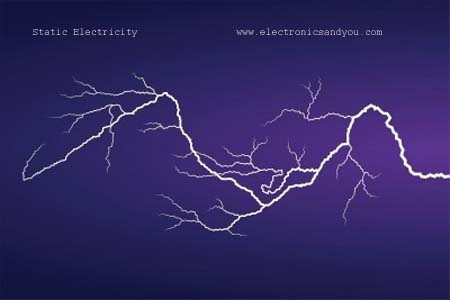
Static Electricity
Current Electricity
Current electricity can be defined as electricity that flows through a circuit, or a continuous unbroken path. This path is a good conductor of electricity such as copper. Read: How Electronic / Electrical Circuit Works
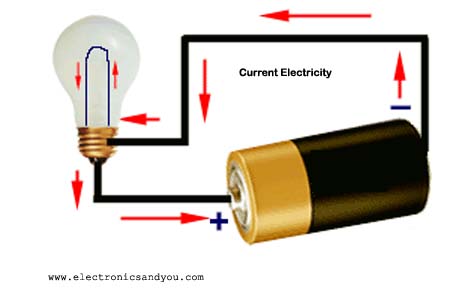
Current Electricity
How to Generate Electricity
Generating electricity need knowledge about electronics, electronic components, engineering, physics and chemistry. There are various sources to generate energy – renewable and nonrenewable.
Hydroelectricity / Hydro Electric Power
Hydroelectricity is the most common method of generating electricity. Water is stored is a high dam or an artificial or natural lake or reservoir. This water stored in a high place has gravitational potential energy. Down this source of falling water is a power station equipped with water turbines. Potential energy is converted to kinetic energy when water falls down. This kinetic energy rotates the water turbines to generate electricity.
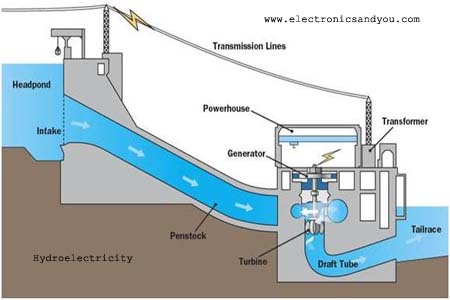
Hydroelectricity
Wind Energy or Wind Power
Wind is a renewable source of generating energy. Kinetic energy of moving air rotates fan blades of windmills. These blades are connected with turbines. Rotating blades of windmills rotate the turbine to generate electricity.
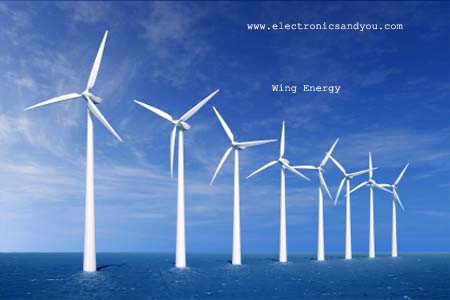
Wind Energy
Solar Energy or Solar Power
Solar energy is a renewable source to generate electricity. Artificially created solar cells store and convert solar energy into electricity. These solar cells are mainly of two types: Crystalline silicon solar cells and “Thin-film” or polycrystalline PV cells.
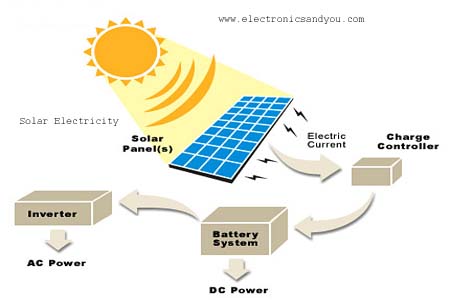
Solar Electricity
Generating Electricity with Fossil Fuels
Fossil fuels such as coal and oil is used to generate heat. This heat converts water into steam at very high temperature and high pressure. This steam at high pressure drives a steam turbine. The rotating shaft of the steam turbine is coupled to the armature of the alternator to generate electricity.
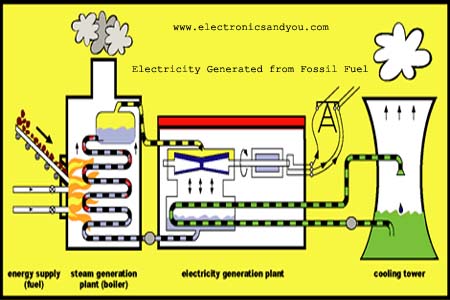
Generating Electricity with Fossil Fuels
Generating Electricity with Tidal Power / Wave Power
This a new technology to extract energy from movement of water in a tidal estuary and from motion of waves. The basic principle behind generating electricity the same – to drive a mechanical turbine.

Generating Electricity with Tidal Power / Wave Power
Geothermal Energy
Geothermal energy is energy from within the earth. The earth from inside is too hot. This heat from within the earth can be used to turn turbines and produce electricity. This technology is still a subject matter of further research and engineering.
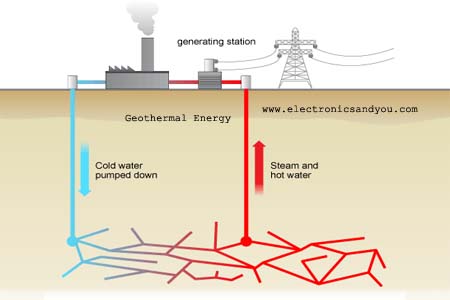
Geothermal Energy
Nuclear Energy
Nuclear fission is a process in which radioactive atomic nuclei break down and release energy in the form of radiation. This energy is further used to turn turbines and produce electricity.
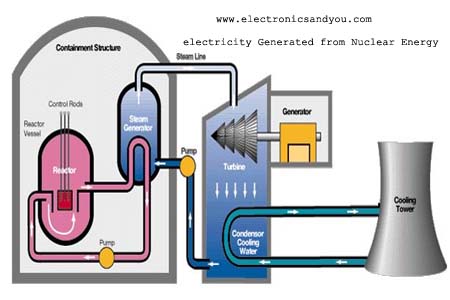
Electricity Generated from Nuclear Energy
Latest Trend to Generate Electricity
While there are several sources to generate electricity, hydro electricity is the most common. Clean and green energy generated through solar energy and wind energy is the latest trend in generating own electricity for residential use.
Keywords:
SMT Reflow Oven, Lead free Reflow Oven, Reflow Oven Manufacturer, LED reflow oven, PCB Reflow Oven, Nitrogen Reflow Oven, Dual Rail Reflow Oven, China Reflow Oven, wave soldering machine, Dual Rail Wave Soldering Machine, Nitrogen Wave Soldering Machine, Wave Soldering Machine Manufacturer.




Contact: Mr Tommy
Phone: +86 13691605420
Tel: +86 -755-85225569
Email: tommy@flason-smt.com
Add: 94#,Guangtian Road,Songgang Street,Bao an District Shenzhen China